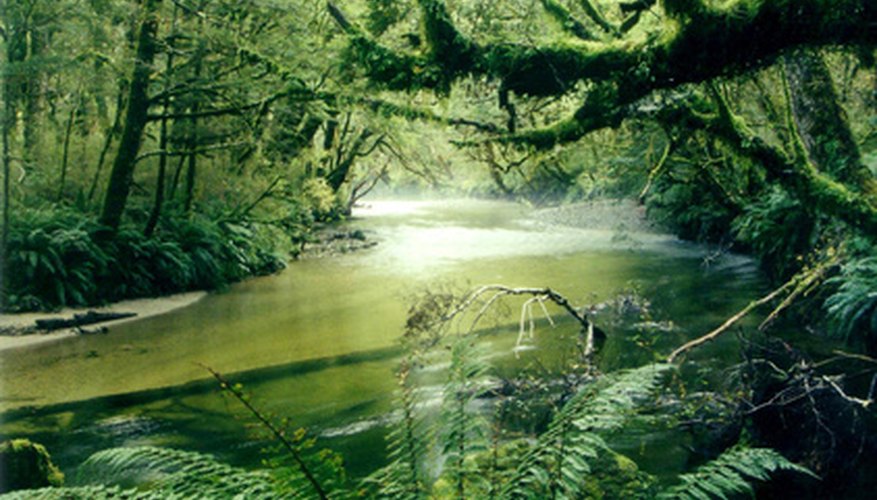The rainforest is filled with animals and plants of all sizes, shapes and colours. You may not be able to go to the heart of the rainforest, but you can bring some rainforest learning and fun to your backyard with fun games and projects. Design rainforest games to teach children about ecosystems, animal behaviour and conservation.
Amazon Ant March
Amazon ants work together to find food, to protect their home and to protect their queen. Sometimes when a colony gets too large or if food becomes scarce, the ants begin a march to other parts of the rainforest to find a new home. You can simulate this activity and teach cooperation. In this game, an adult maps out a path that represents a river in the Amazon rainforest. The children form two lines and hold hands to form a chain. The first line of "ants" to make it to the end of the river and a new home without breaking the chain wins the game. If a chain is broken, the "ants" have to return to the beginning of the river and start again.
- Amazon ants work together to find food, to protect their home and to protect their queen.
- If a chain is broken, the "ants" have to return to the beginning of the river and start again.
Amazon Animal Tag
Tag can help teach children about the rainforest ecosystem and animal habitat. An adult prepares for the game by creating colourful animal tags with a picture and the name of an Amazon animal. Large white adhesive labels make good tags. The adult designates "home" and different parts of the play yard as animal habitat. A bench can serve as the forest canopy where many birds live. A chair can be a tree where monkeys play and live. A bush can be an ant hill and a path can be a river. To play, each child draws a tag out of a box or bag. They then become that animal. Each child has to find his or her Amazon home. For example, piranha live in the river and Macaws live in the canopy. The game begins when the child that is "it" calls the name of an Amazon creature. The "creature" must race around the play area and make safely back to his or her "home" without being tagged. If the child playing "it" tags the creature, they trade places and the game continues.
- Tag can help teach children about the rainforest ecosystem and animal habitat.
- To play, each child draws a tag out of a box or bag.
Monkey Game
According to The Wild Ones website, the monkey game appeals to young children's curiosity. Parents and teachers need to fill clean, secure containers, like plastic eggs, with raisins, banana chips, apple chips, oranges and nuts. The containers should be hidden under or in bushes, plants and trees where the children can reach them. Plastic chairs in a circle can be used to represent the trees where the monkeys live.
The game is used to reinforce lessons on the eating, sleeping and social habits of monkeys. The children, who are in the roles of the monkeys, can leap around the play area imitating tree dwelling monkeys. Then they search the area for food. When the children find some, they must return to their "tree" to eat.
- According to The Wild Ones website, the monkey game appeals to young children's curiosity.
- The children, who are in the roles of the monkeys, can leap around the play area imitating tree dwelling monkeys.
Teachers can add a conservation element to the game by removing a chair--to simulate the shrinking rain forest--while the "monkeys" are out looking for food. This forces at least two of them to share a chair. Another chair can be removed when the "monkeys" leave their chair trees to play. This continues until there is only one chair left.
